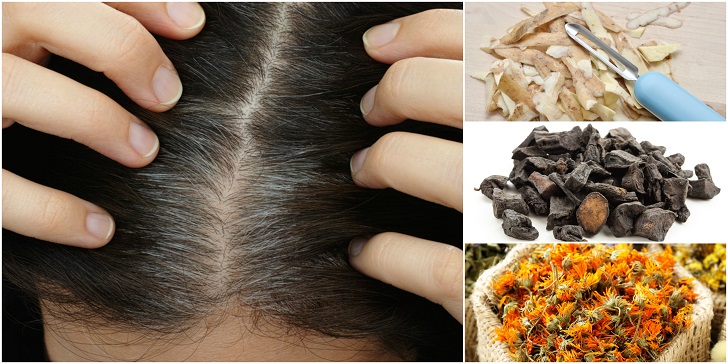
While some may see it as a sign of wisdom and maturity, many people view gray hair as an unwanted sign of old age.
Every hair on your head actually starts off as white, and is then colored by a natural pigment called melanin. As your hair grows, melanocytes – cells that produce melanin – transfer melanin to each individual hair follicle, which seamlessly colors each strand of hair.
As we age, melanocyte activity slows down and eventually stops, leading to less pigment in the hair.
Although genetics, hormones, and environmental pollutants can speed along the graying process, the sad fact remains that your chances of going gray increase 10% to 20% every decade after the age of 30.
Though there are many dyes on the market formulated specifically to cover gray hair, the harsh chemicals in these products make them undesirable to those with an eye for maintaining optimal health.
Fortunately nature provides us with both internal and external remedies for slowing, halting, and sometimes even reversing the growth of gray hair, as well as masking it without hurting our bodies in the process.
1. Henna
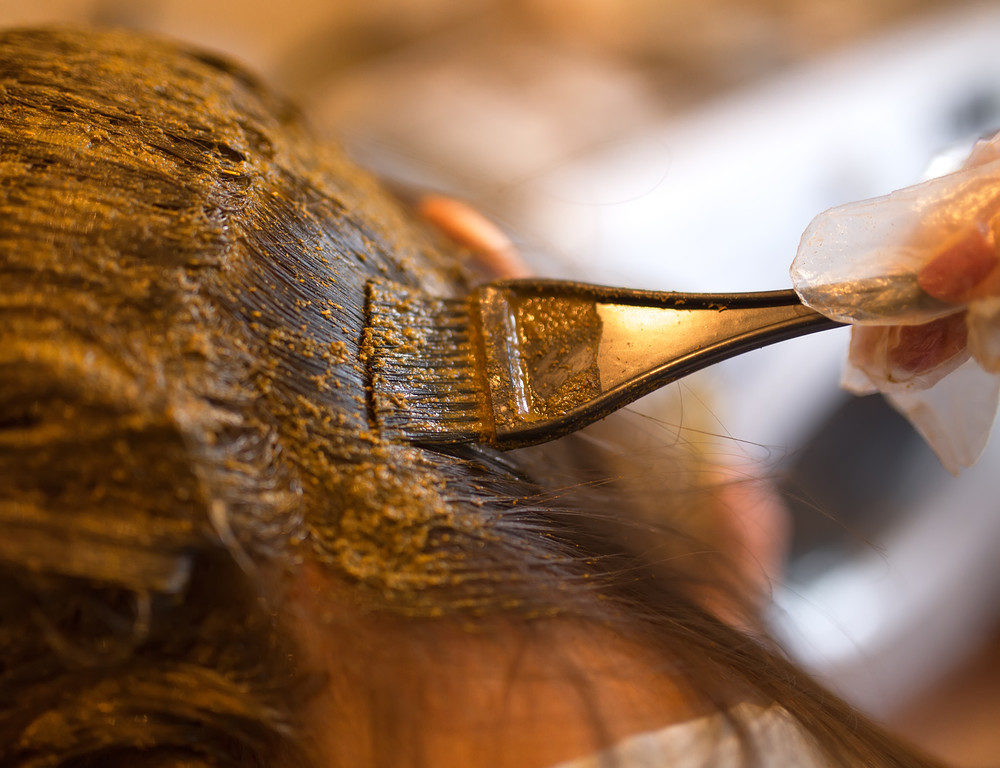
Henna is a beautiful auburn dye prepared from the Lawsonia inermis tree which has been used for cosmetic purposes since ancient times.
Most henna comes in powder form and can be mixed with a variety of other natural substances such as lemon juice, vinegar, and cloves or fragrant oils before it is applied to hair.
Henna can also be mixed with indigo for a darker color if desired.
Henna should be used regularly to maintain its brilliant color and to effectively mask the gray – anywhere from once per week to once a month depending on the depth of color desired.
2. Tea
Another method for covering gray hair and restoring your natural hair color is to use tea. Black teas work best for darker hues, chamomile for blondes, and rooibos for redheads.
Once a week, steep 3 to 5 teabags in two cups of boiling water and allow it to cool before applying it to your clean, wetted hair.
For easier application, try mixing it with conditioner.
Leave it in for a least one hour, and bear in mind that the longer it’s in your hair, the more intense the color will be. When your gray hair has absorbed the color of the tea, the mixture can be rinsed out.
***Make sure to rinse your hair in cool water. Hot water will leach color from hair faster than colder water.***
Recommended Reading: 18 Genius Ways To Recycle Used Tea Bags
3. Coffee
For black or brown tresses, or to add some tonal variation to dark hair, just brew up a pot of strong coffee. Once cooled, mix one cup of the brew with two cups of hair conditioner.
Throw in a few spoonfuls of spent coffee grounds into the mixture for added effect.
Leave it in your hair for a least one hour before rinsing. Though the coffee dye may be subtle, you can repeat these steps to achieve your desired color.
4. Herbs
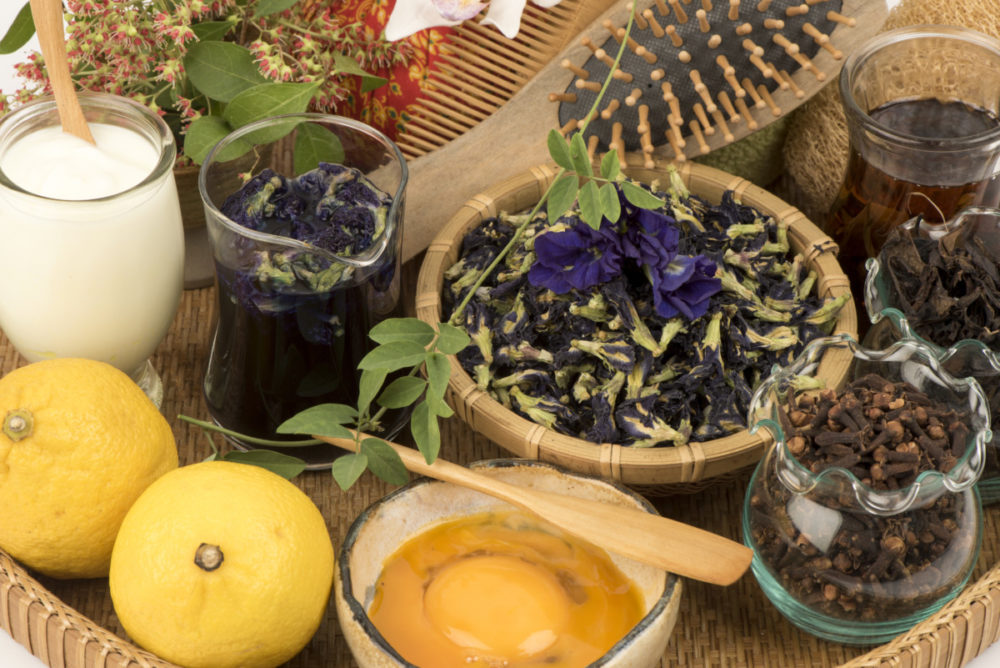
Flowers and herbs make wonderful natural dyes. Because they are so gentle, you will likely need to use them regularly to maintain the color.
There are many herbal options depending on your natural hair color:
- Dark Hair – Rosemary, sage, nettle, cloves, cinnamon, black walnut hulls, and comfrey root
- Blonde Hair – Chamomile, calendula, lemon peel, saffron, marigold, yarrow, sunflower petals, and mullein flowers
- Red Hair – Hibiscus flowers, red clover, rosehips, red rose petals, beets, carrots, and marigold
When using fresh plants, be sure to dry them out completely and crush them into a fine powder.
Feel free to mix and match different herbs to add more dimension to your color. Mix together ½ cup of dried herbs with water and simmer on the stove for 30 minutes.
Allow it to cool before adding one tablespoon of a carrier oil like coconut oil. Apply to hair and let it sit for one to two hours before rinsing.
Recommended Reading: 28 Best Herbal Remedies For Hair
5. Amla the Indian Gooseberry
Phyllanthus emblica, commonly called Amla or Indian Gooseberry can be mixed with natural coconut oil or almond oil and massaged into the scalp to cover gray hair.
Not only does this mixture act as a colorant, the oils will moisturize and enrich scalp and hair for a glossy healthier appearance all around.
Amla juice can also be enjoyed as a beverage to improve overall health and slow or halt the growth of stubborn gray hair.
6. Beet, Carrot, and Lemon Juice
Juicing your hair with beet juice, carrot juice, lemon juice, or a combination of the three, will restore reddish hues or add some vibrant highlights to your existing color.
Beets are better for darker reds, carrots for softer orange, and lemon for golden blonde.
Combine one cup of juice with hair conditioner or coconut oil and massage into hair.
Since beet and carrot juice will color your skin too, be sure to protect your face by applying oil around your hairline, ears, and neck. Leave it in for an hour before rinsing.
For lemon juice applications, sit out in the sun for extra lightening.
7. Potato Skins
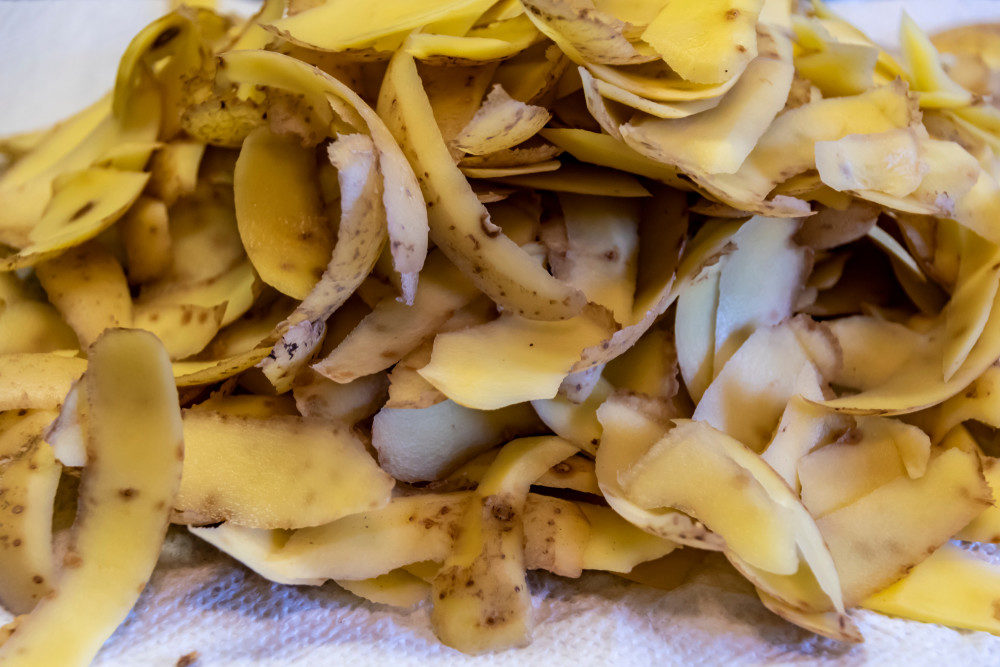
The next time you peel your potatoes, save the skins to make a natural, hair-darkening dye. The starches in the potato peel act as a colorant that will slowly darken gray hair.
Boil two cups of water with one cup of potato skins for at least 25 minutes, strain out the peels and let the potato water cool down.
It won’t smell very nice, so you may want to add a few drops of essential oil to the mix.
Shampoo and condition your hair as normal, parting your hair into several sections. You can pour the liquid directly on the hair sections or use a small hair dyeing brush to saturate each section.
Rinse hair with cool water and repeat the process regularly until you get the desired look.
8. Catalase
A potent anti-oxidant found in the cells of all plants and animals living in an oxygen-rich environment, catalase is now known to help halt the growth of gray hair.
Hydrogen peroxide, a naturally occurring waste by-product of the metabolic process, is thought to be a major contributor in the breakdown of pigments in hair.
As we age, our bodies produce less catalase, resulting in the build-up of hydrogen peroxide in our hair follicles – which literally bleaches hair follicles from the inside out.
By eating foods high in catalase such as garlic, onions, cauliflower, potatoes, broccoli, kale, and cabbage, we introduce this gray hair-fighting enzyme back into our bodies, resulting in the gradual return of our youthful hair pigmentation through a safe, all-natural process.
9. Copper
Another key to the mystery of why hair goes gray, a study published in 2012 revealed that low levels of copper in the body can lead to the premature graying of hair.
Measuring the copper, zinc, and iron levels in the blood of 66 people under the age of 20 who were going gray, researchers found that their copper concentrations were significantly lower than those in the same age group who weren’t going gray.
Preventing gray hair could be as simple as eating more sesame seeds, cashews, soybeans, shiitake mushrooms, spinach, and asparagus – all of which are excellent dietary sources of copper.
10. Vitamin B12

Playing a key role in the healthy functioning of the brain and nervous system, vitamin B12 also helps produce DNA and RNA – the genetic code needed for the growth and development of all living beings.
Though a vitamin B12 deficiency has been linked to graying hair, it’s easily reversed by including salmon, sardines, tuna, lamb, beef, eggs, milk and other vitamin B12 foods into your diet.
Or, boost B12 in the body by taking a supplement – such as this Nature Made Vitamin B12 supplement.
Read Next: 10 Best Vitamins For Faster & Healthier Hair Growth
11. Fo-ti
With a rich history as an anti-aging tonic, fo-ti (Polygonum multiflorum) is a climbing vine native to China. Also known as “he shou wu” which translates to “the black-haired Mr. He”, legend has it that an ill and impoverished Mr. He ate the roots of the fo-ti plant to keep from starving.
Not only did it restore his health and vitality, it turned his hair from gray to black.
Some scientific studies have verified the long-held belief that fo-ti can help reverse the aging process.
Containing more than 100 chemical compounds, a review on the current science found that fo-ti has anti-inflammatory, anti-cancer, and anti-aging properties, and could be a useful therapy for Alzheimer’s and Parkinson’s disease.
Also effective for baldness and thinning hair, fo-ti extract has been shown to promote hair growth by increasing the size and number of hair follicles on the scalp.
Although fo-ti has yet to be rigorously studied for restoring hair color pigment, traditional Chinese medicine practitioners often prescribe it for just this purpose.
Available as a supplement, fo-ti is slow-acting and it may take anywhere from three to six months to see changes in your hair color.
***As always, remember to consult a doctor before starting any new vitamin or herbal supplements***
12. Quit Smoking
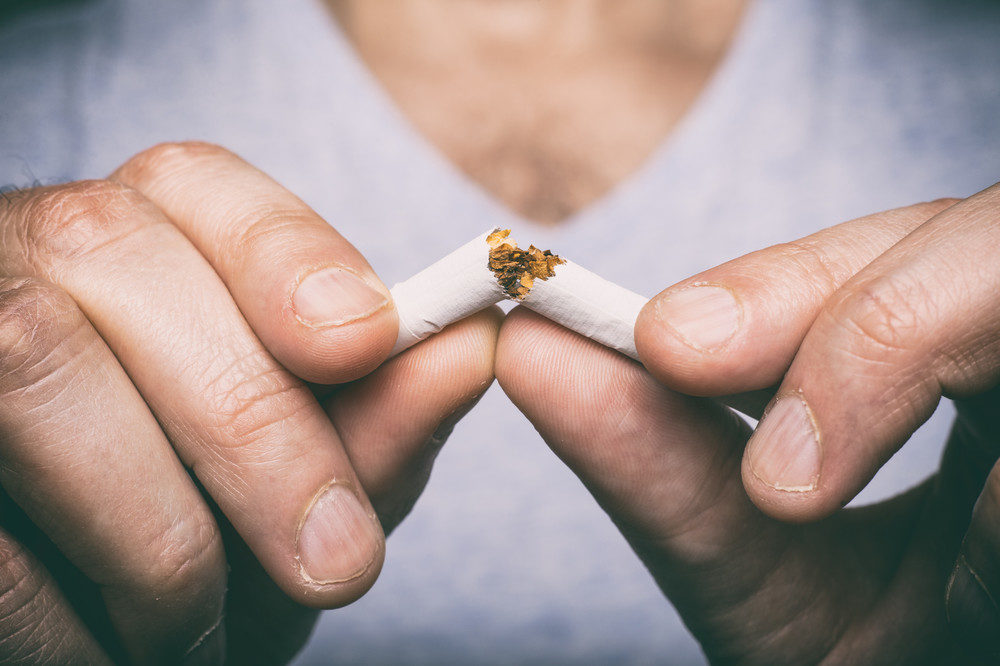
In addition to the numerous health benefits of quitting smoking, there is a link between cigarette smoking and premature graying.
Smoking causes oxidative stress, which is known to accelerate the aging process and is more likely to turn hair gray before the age of 30.
Our bodies are very resilient, and by cutting back on cigarettes or quitting entirely you may be able to reverse the damage to your cardiovascular health as well as tell-tale signs of aging like wrinkles and gray hair.
While some may choose to wear their lightened locks with pride, the battle against gray hair is on-going.
Rest assured that fighting this sign of aging does not necessarily mean turning to harmful chemicals to recapture your youthful appearance.
There are plenty of all-natural methods for reducing and even eliminating that unwanted gray.
Pin This To Save For Later

